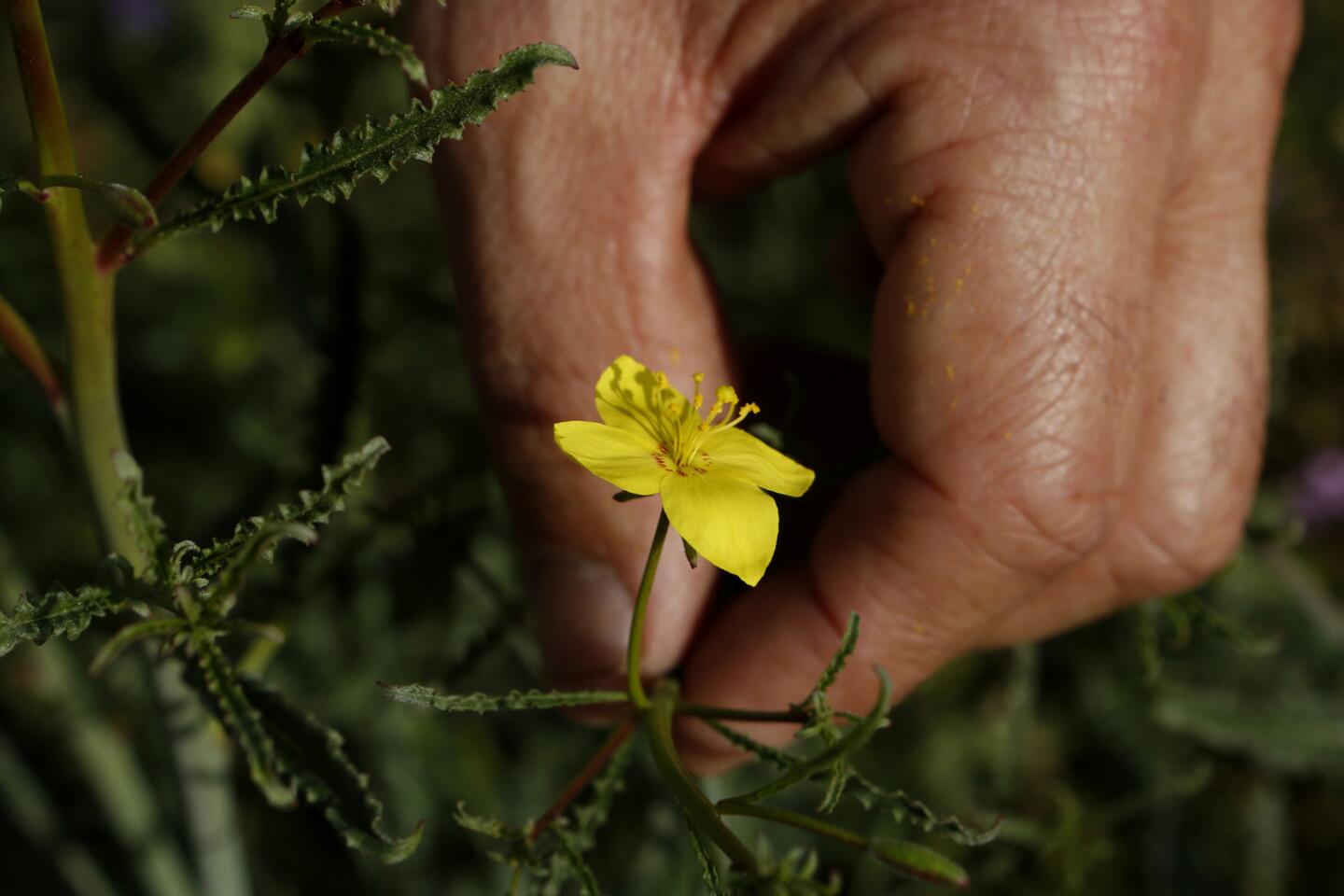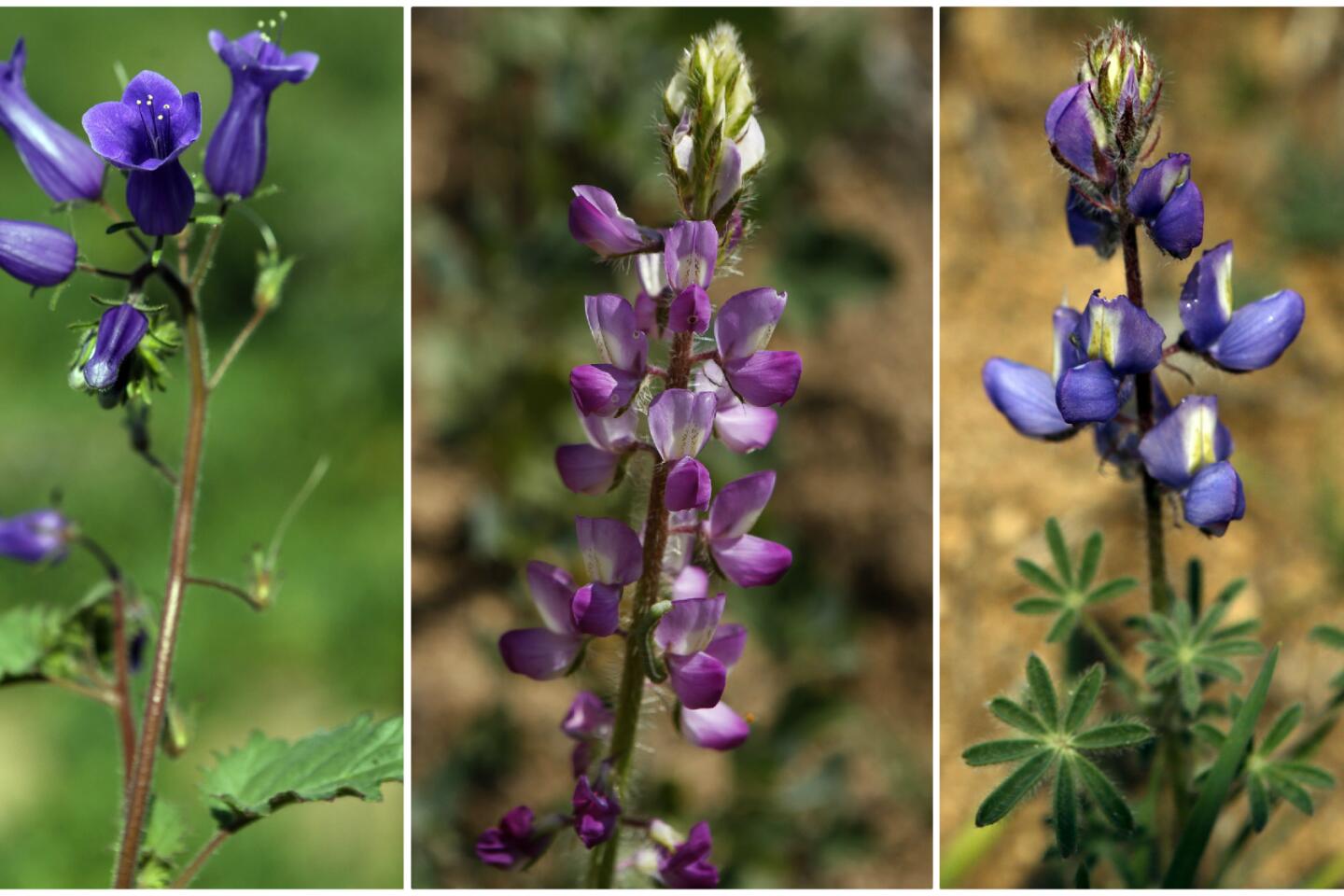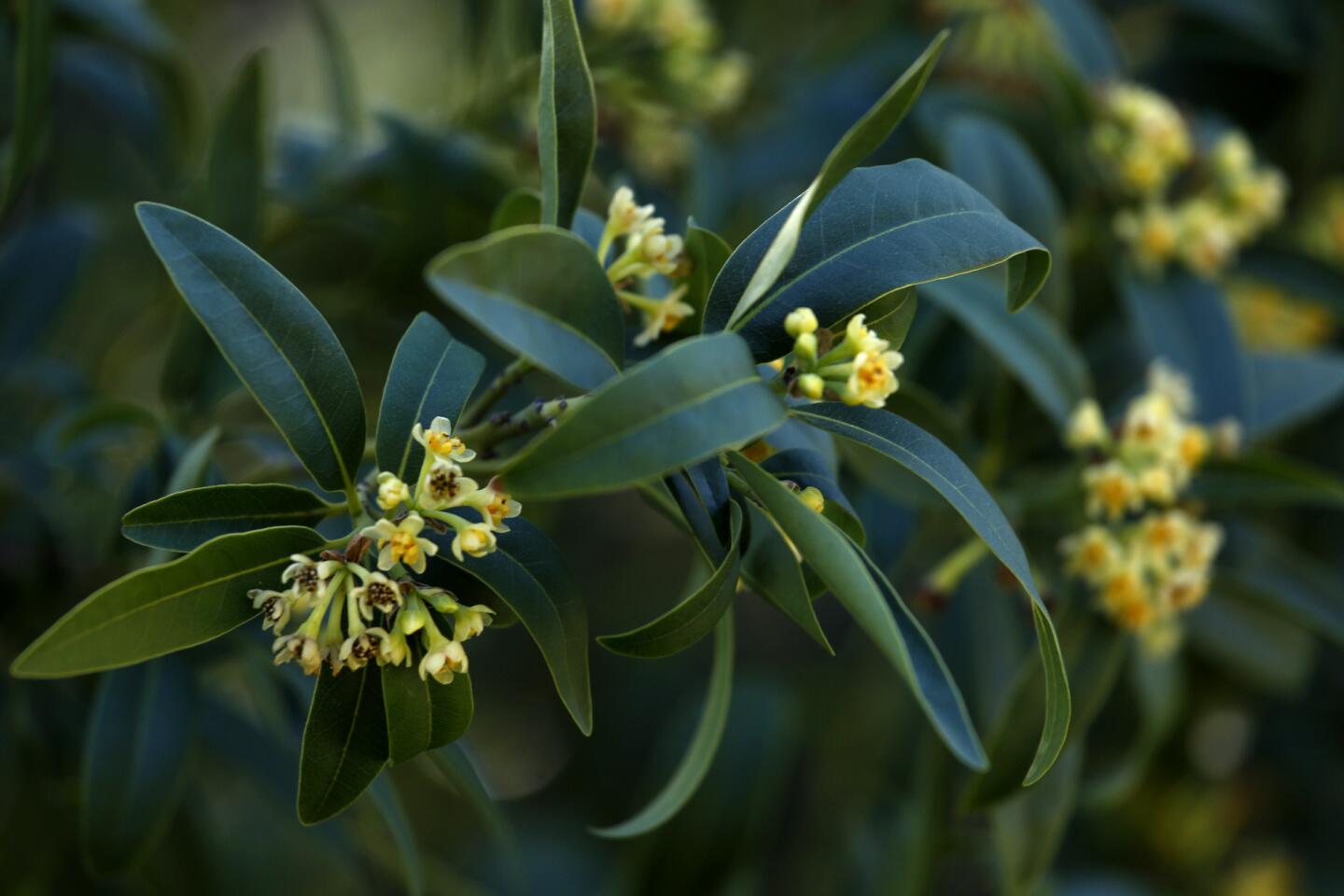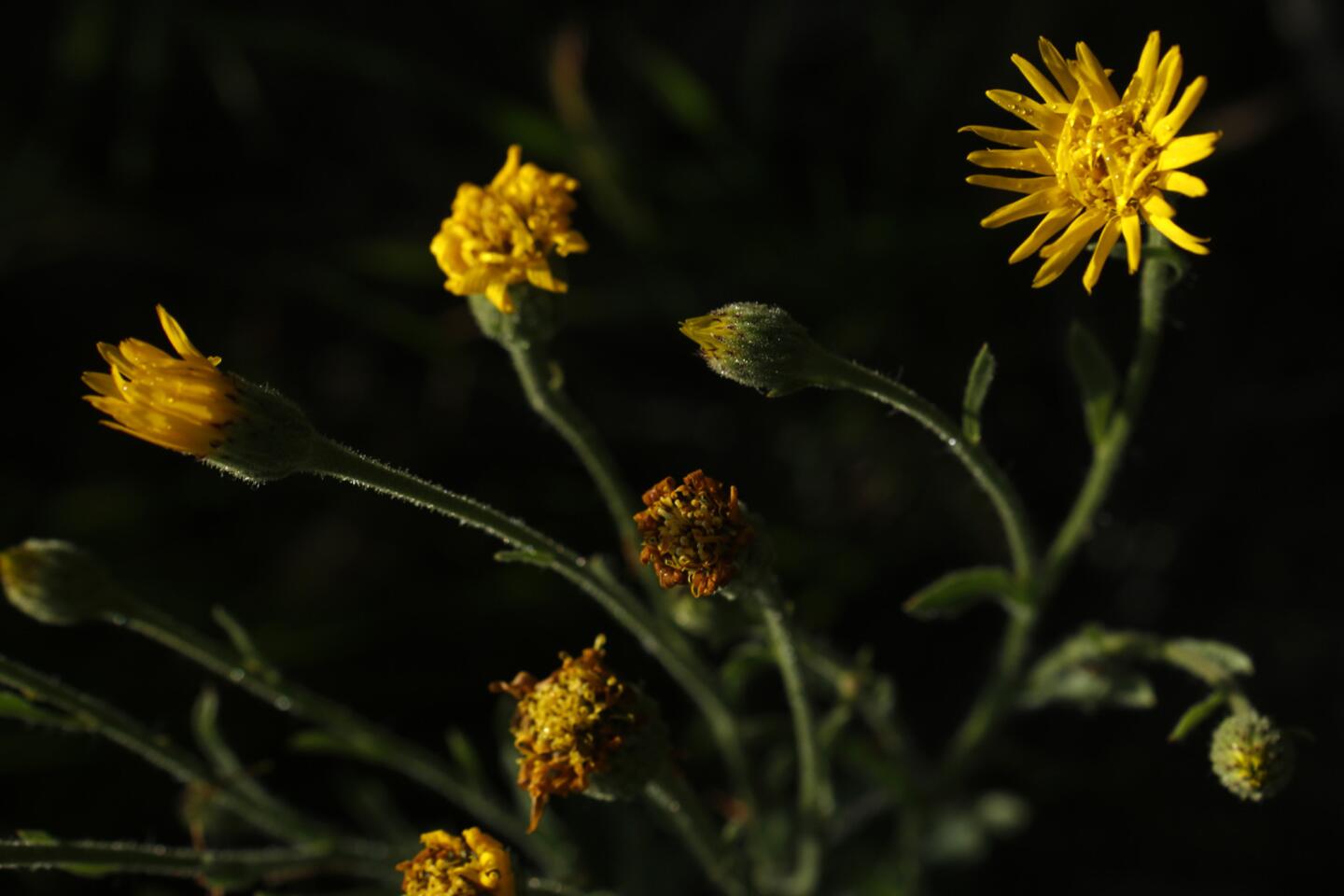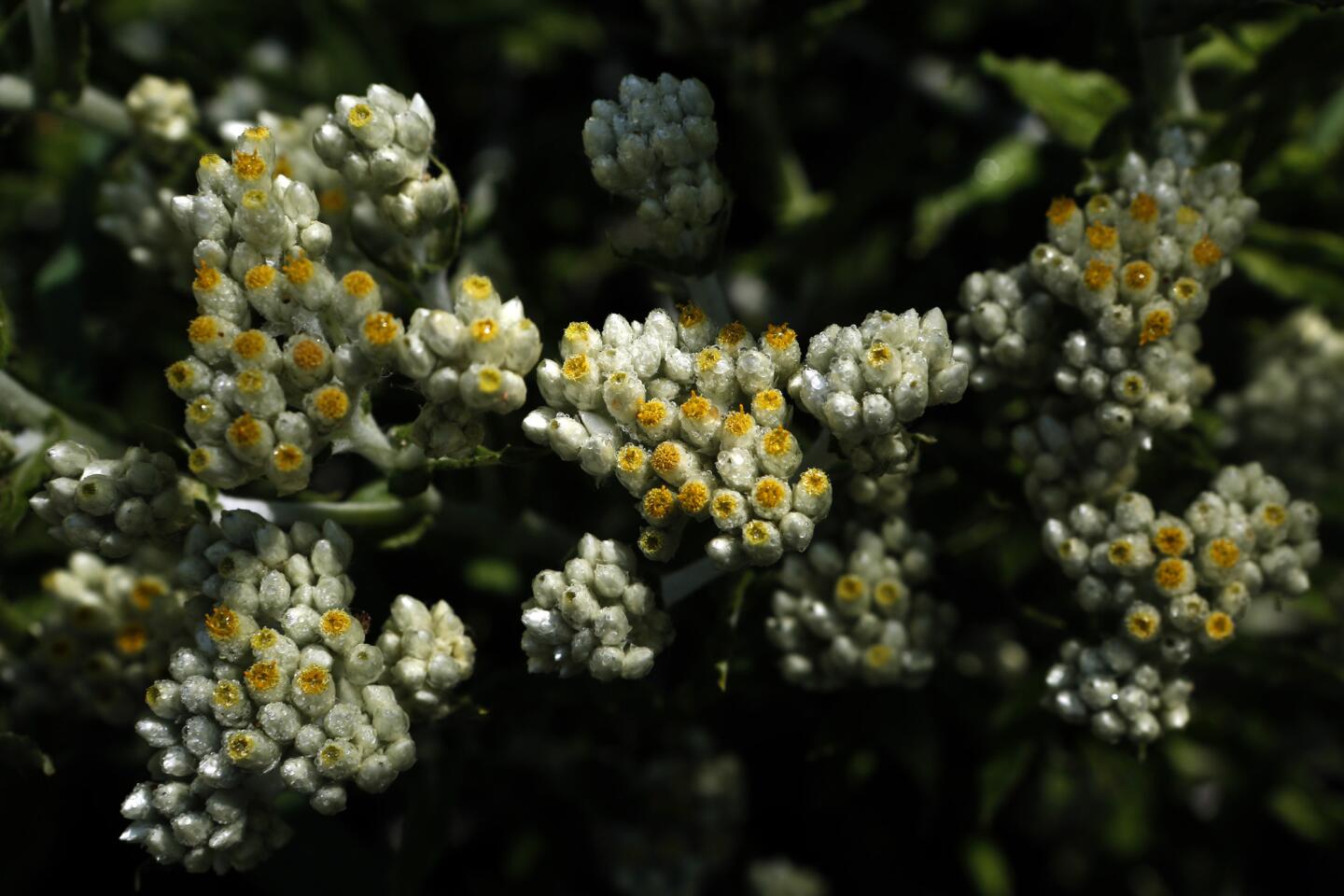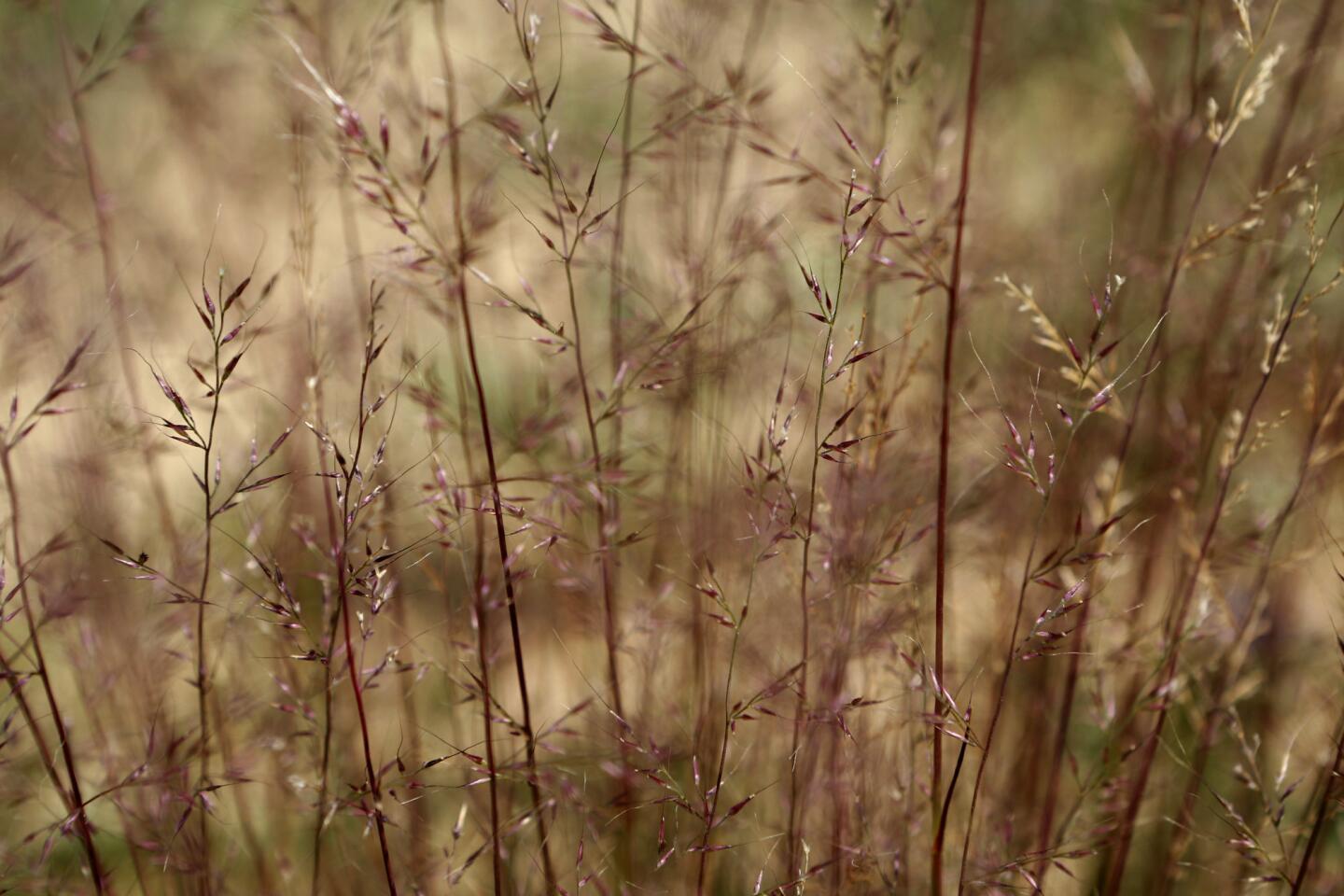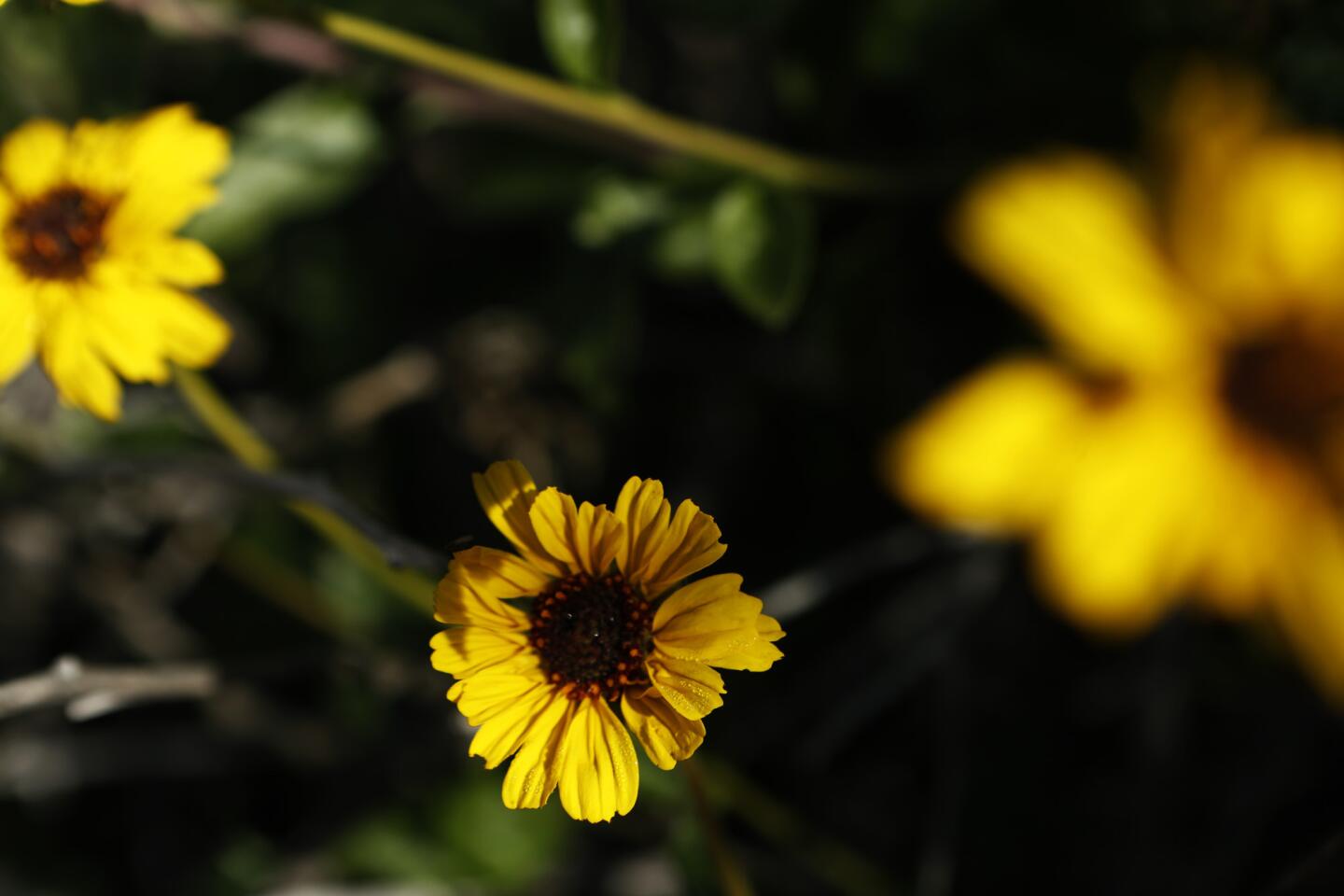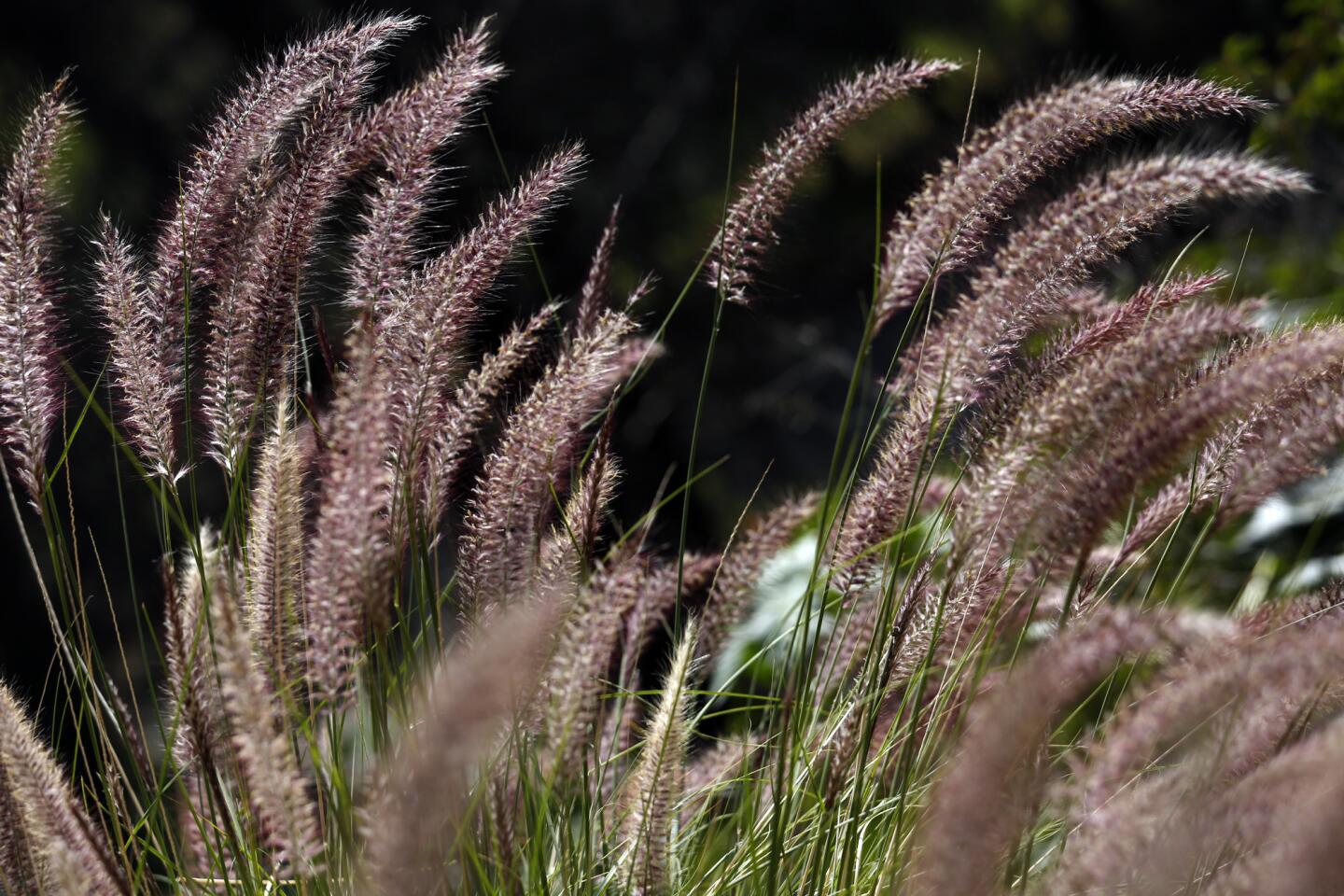Can you name any plants in Griffith Park? This 3-hour trek can help
- Share via
Despite four years of drought, it’s a good time to be a plant in Griffith Park.
On Sunday, Jorge Ochoa — an instructor at Long Beach City College who has been nicknamed the “Indiana Jones of Horticulturists” — is leading a plant identification trek into the park, which ranks as the nation’s largest municipal park that also contains wilderness areas.
Consider it a great way to glean inspiration for a drought-tolerant garden — or just learn more about identifying native or naturalized plants.
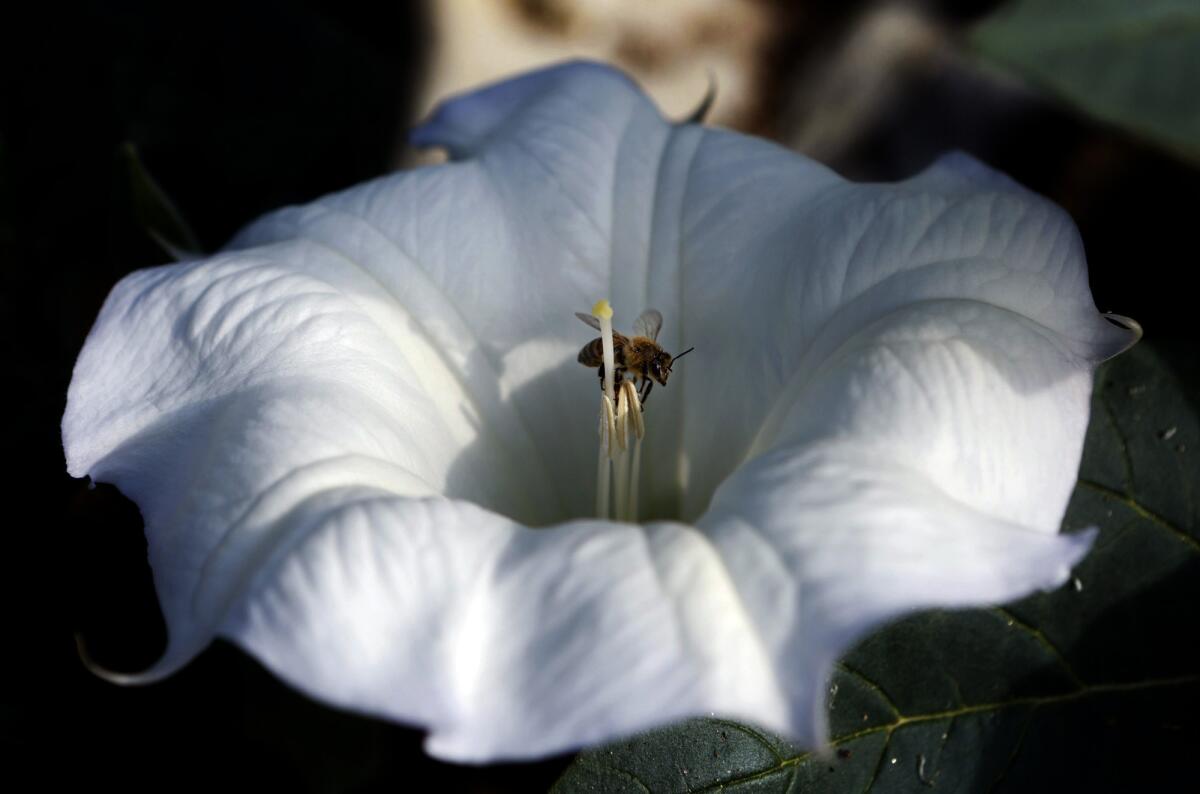
A bee collects pollen from a Sacred Datura plant in Los Angeles’ Griffith Park.
The three-hour trek has been held several times over the last few months, bringing fresh appreciation for the 120-year-old park. Following a ruinous 2007 fire that razed 20% of Griffith Park, Ochoa has been working to catalog its more than 400 species of flora, including 325 native plants. The plant study, part of an ongoing natural history survey that also documents birds, bats, mushrooms and butterflies among other park inhabitants, is the first of its kind.
See the most-read in Life & Style this hour >>
Griffith Park’s inaccessible, deep canyons can harbor “single occurrence species”: plants that exist in distinct, solitary areas.
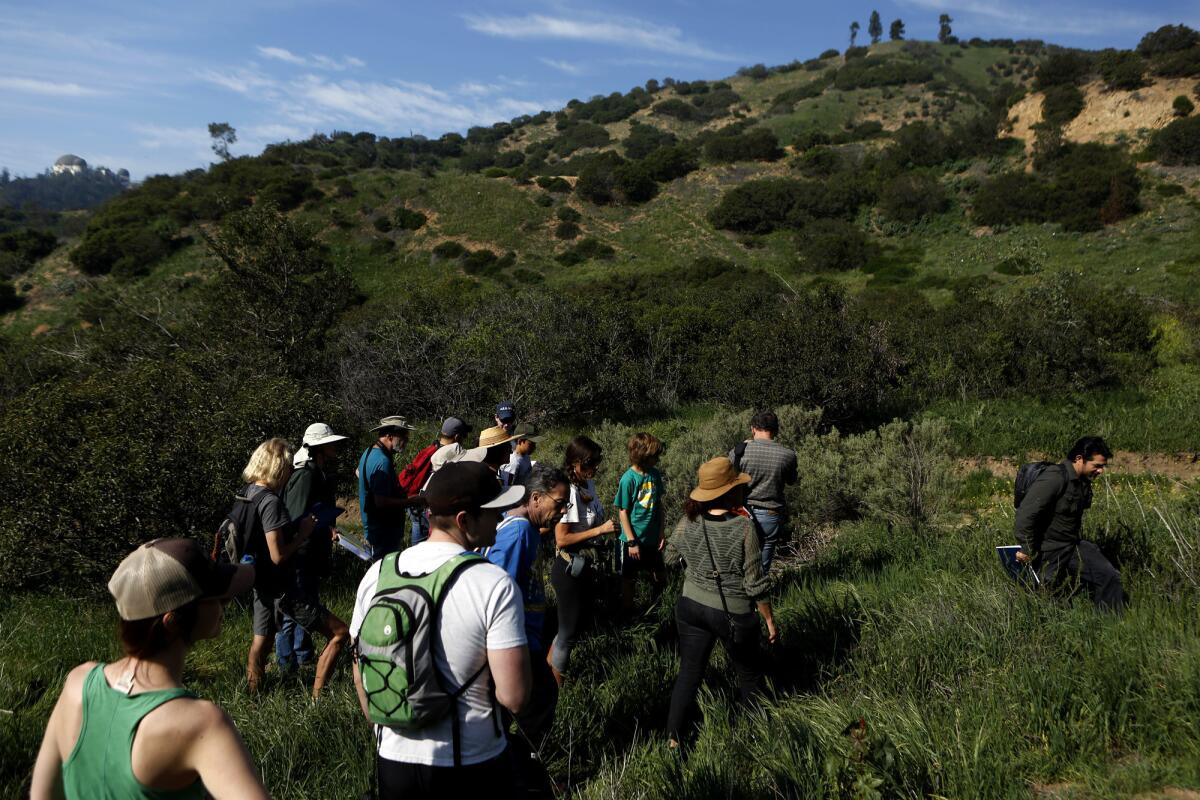
The tour is in association with the Friends of Griffith Park. The next tour will take place on March 20, 2016. Admission is $25 per adult and free for children.
The chocolate lily, for example — or the Fritillaria biflora, to cite the flower’s “hoity-toity” botanical name, as Ochoa terms it — has been found only in a western canyon, limited to a space the size of a small patio. Yellow mariposa is confined to a mere 3-foot area on a mossy, north-facing slope. And the Humboldt lily, which has a wider range, is limited to four deep canyon locations shaded by sycamores.
Although Griffith Park’s acreage represents a tiny fraction of the vast Santa Monica Mountain range, nearly half the species found in the range are packed into the sliver of parkland.
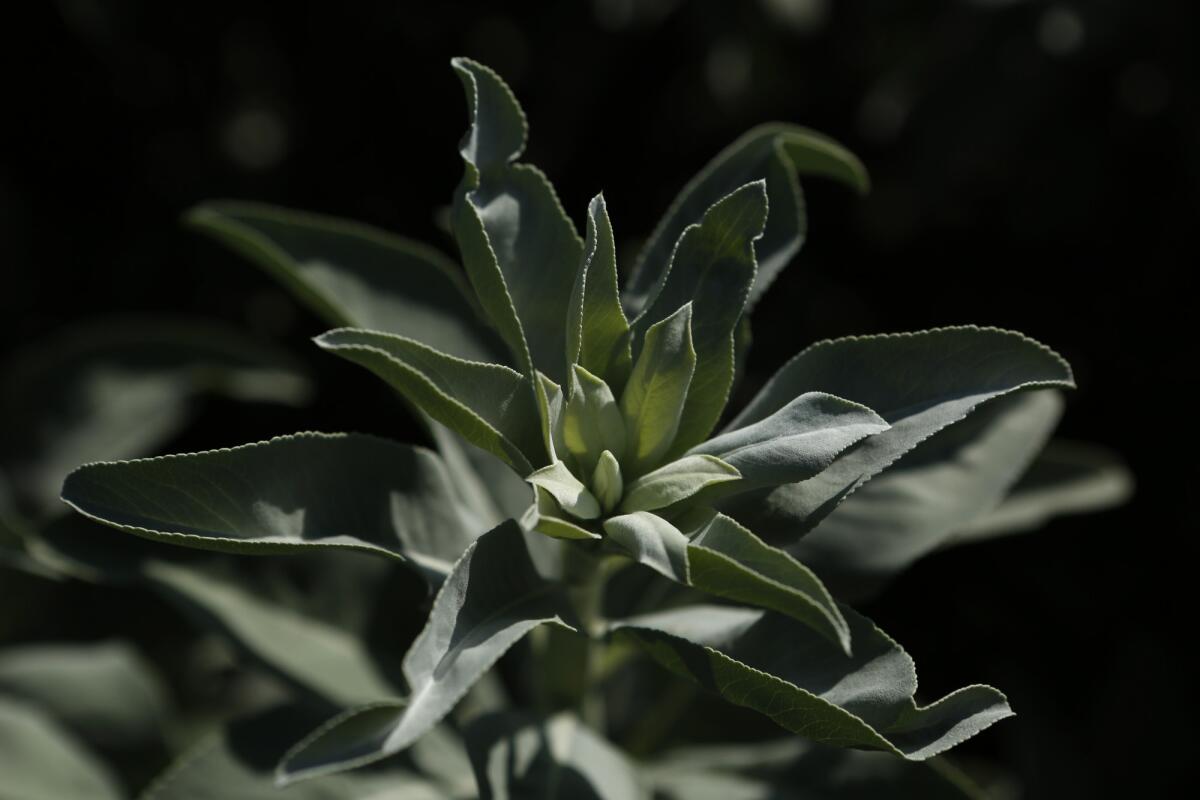
White sage can be found at the park.
“Griffith Park is a hot spot of biodiversity,” said Gerry Hans, president of Friends of Griffith Park. “It’s surprisingly pristine, unimpacted, and that’s how we want to keep it.” (The 500-member organization, founded in 2010, is sponsoring Sunday’s trek and organizes other events including field trips and cleanup days.)
The itinerary of the treks change with each hike, but there’s one query that comes up again and again: Can you eat the plants?
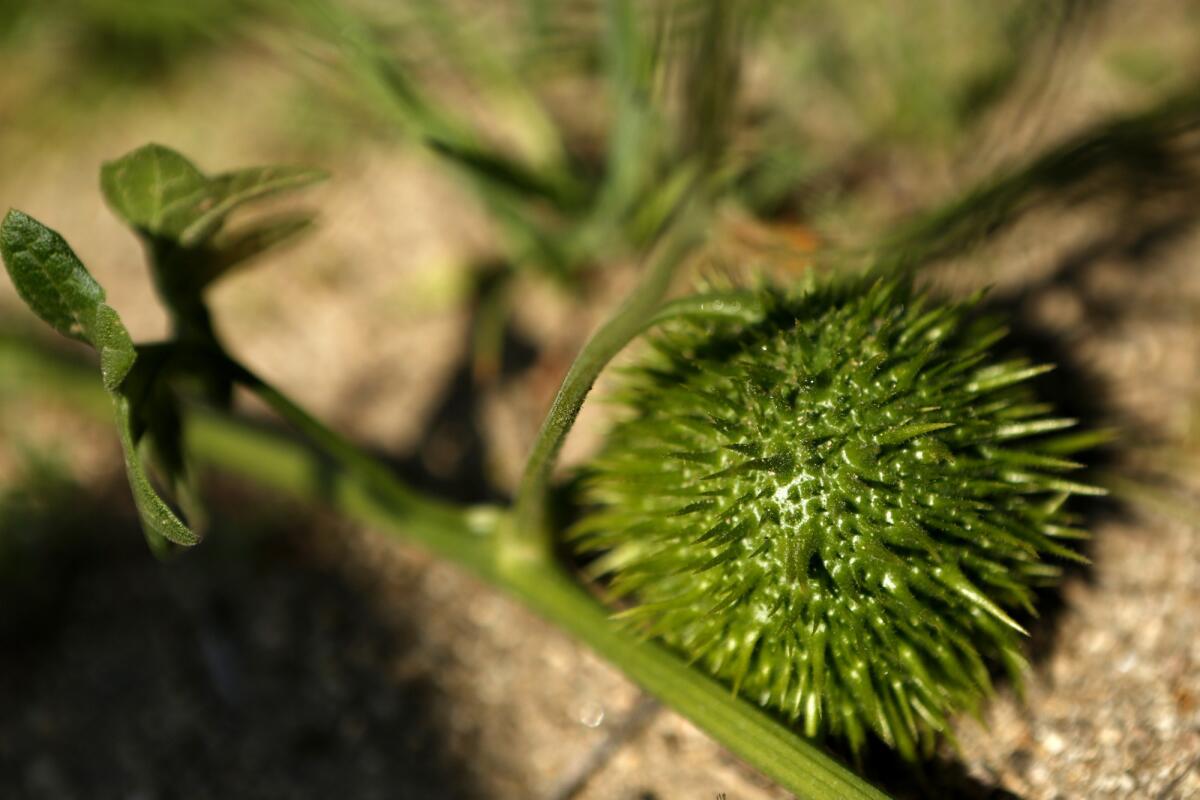
Fruit from a wild cucumber plant found during the native plant tour.
“That’s the question most people ask,” Ochoa said. “California plants –– they’re not high in caloric yield. That’s why populations here were never big. So the answer is, well, you’re going to starve.”
Twitter: @latimeshome
::
Friends of Griffith Park plant identification class info
Friends of Griffith Park will hold plant identification classes from 9 a.m. to noon on Sunday and April 17. Each class limited to 40 participants. Cost is $25. Details at friendsofgriffithpark.org.
ALSO:
Drought-tolerant plants that will look great in your garden!
It’s Dry Out There: 11 Inspiring water-wise landscapes
Will L.A. become the land of front-yard veggie gardens? This couple is leading the way
